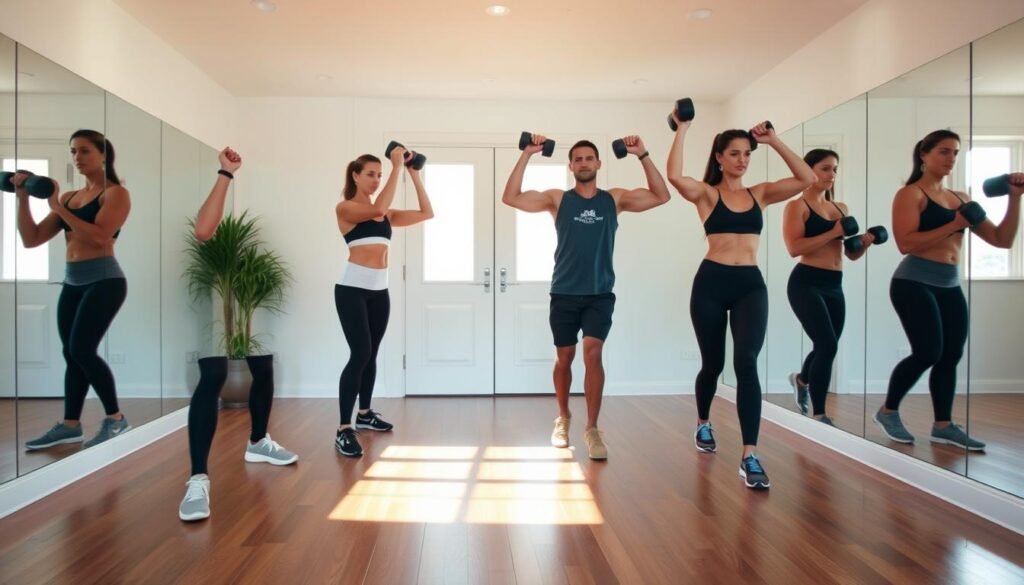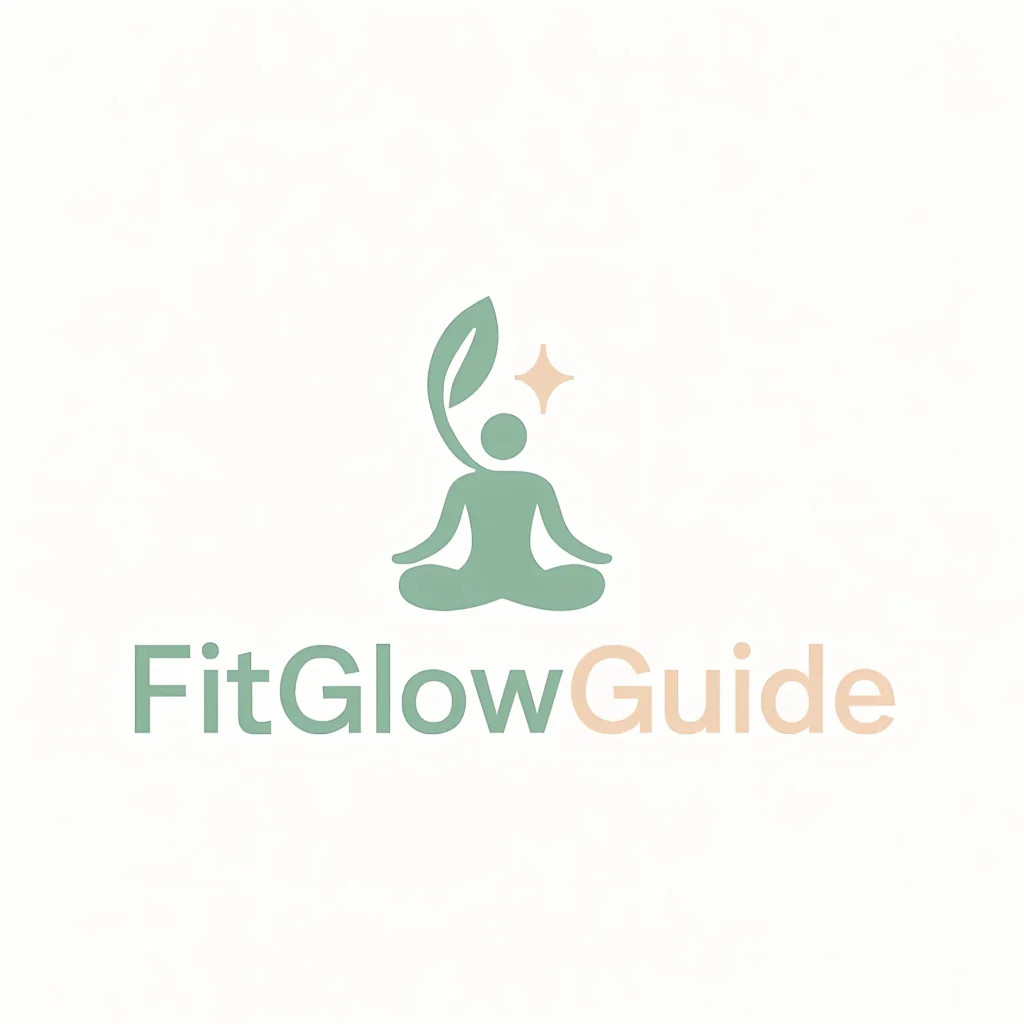Did you know that weak forearms can limit your grip strength, making everyday tasks like carrying groceries or opening jars challenging? Forearm strength is not just about aesthetics; it’s crucial for functional daily activities and enhancing performance in various sports.
Strengthening your forearms can be achieved through simple exercises that can be done at home with minimal equipment. Exercises like grip strengthening, wrist extensions, and forearm curls can significantly improve forearm strength and overall grip strength.
By incorporating these exercises into your routine, you can improve your forearm muscles, enhancing both their strength and functionality. This guide will explore effective ways to strengthen your forearms at home.
Key Takeaways
- Understand the importance of forearm strength for daily activities and sports performance.
- Learn various exercises that can be done at home to strengthen forearms.
- Discover how to improve grip strength through simple forearm exercises.
- Explore the anatomy of forearm muscles to understand their function.
- Create a balanced forearm training routine for stronger forearms.
The Importance of Forearm Strength
Developing forearm strength is crucial for overall fitness and daily functionality. Strong forearms contribute significantly to our ability to perform various tasks, from simple daily activities to complex athletic maneuvers.
Functional Benefits in Daily Activities
Forearm strength is vital for everyday activities that involve gripping, lifting, or carrying objects. It enhances our ability to perform tasks such as opening jars, carrying groceries, or even typing on a keyboard efficiently. Moreover, strong forearms reduce the risk of injuries by providing a stable foundation for wrist and hand movements.
Research highlights that individuals with stronger forearms tend to have better overall hand function and dexterity. This is particularly beneficial for athletes and individuals engaged in activities that require a strong grip, such as rock climbing or weightlifting.
Connection Between Forearm Size and Grip Strength
There is a well-established connection between forearm size and grip strength. Studies show that larger forearms generally correlate with greater grip strength, as the muscles responsible for grip are primarily located in the forearms. The flexor digitorum profundus and flexor digitorum superficialis are key muscles involved in grip strength.
| Muscle | Function | Impact on Grip Strength |
|---|---|---|
| Flexor Digitorum Profundus | Controls finger flexion | High |
| Flexor Digitorum Superficialis | Assists in finger flexion | High |
| Other Forearm Muscles | Support wrist and forearm stability | Moderate |
Understanding this connection is crucial for designing effective workout routines that target forearm development and, by extension, improve grip strength.

By focusing on exercises that strengthen the forearms, individuals can enhance their grip strength, leading to improved performance in various physical activities.
Understanding Forearm Anatomy and Function
The forearm’s anatomy is intricate, involving multiple muscles that work together to facilitate various movements of the wrist and hands. The forearm is divided into two main compartments: the anterior (front) and posterior (back), each containing muscles that perform distinct functions.
The forearm’s complex structure enables a wide range of movement, from simple actions like gripping to complex motions involved in sports and musical performances. Understanding the key components of forearm anatomy is essential for appreciating its functional capabilities.
Key Forearm Muscles and Their Roles
The forearm muscles are responsible for controlling the movements of the wrist, fingers, and forearm itself. The flexor muscles, located in the anterior compartment, are responsible for flexion movements, such as bending the wrist or fingers.
In contrast, the extensor muscles in the posterior compartment facilitate extension movements, like straightening the wrist or fingers.

The Five Essential Forearm Movements
The forearm muscles facilitate five crucial movements: ulnar deviation, radial deviation, wrist flexion, finger flexion, and pronation. Ulnar deviation involves moving the hand toward the pinky side, while radial deviation is the movement toward the thumb side, enhancing the wrist’s position versatility.
- Wrist flexion is bending the wrist toward the forearm, essential for activities like lifting and certain sports techniques.
- Finger flexion involves closing the hand, a fundamental movement for gripping objects.
- Pronation is rotating the hand so the palm faces downward, a movement vital for various daily activities and athletic performances.
Best Home Forearm Workouts Without Equipment
Effective forearm workouts can be done at home with no equipment. These bodyweight exercises target the muscles in your forearms, improving grip strength and overall arm function.

Forearm Plank Variations
Forearm plank variations are excellent for strengthening the forearms, wrists, and shoulders. To perform, start in a plank position with your forearms on the ground, engage your core, and hold for as long as possible.
Variations include changing the angle of your body or lifting a limb to increase the challenge.
Fingertip Pushups
Fingertip pushups are another effective exercise for building forearm strength. By supporting your body weight on your fingertips, you engage your forearm muscles more intensely than with regular pushups.
To perform, get into a pushup position with your fingertips on the ground instead of your palms, and lower your body until your chest nearly touches the ground.
Crab Walk
The crab walk is a full-body exercise that heavily engages the forearms. To do this, sit on the floor with your feet flat and hands behind you, then lift your hips off the ground and walk forward, backward, or sideways.
This exercise not only strengthens your forearms but also improves coordination and overall body strength.
Dead Hangs
Dead hangs help develop grip strength and are an easier alternative to doing pullups. Grip the bar and hold yourself there for as long as possible, with your elbows slightly bent. Squeeze your shoulder blades together and down to engage your lats. Keep your core tight throughout the exercise. Hold the dead hang for 30 seconds to 1 minute for one set.
- Dead hangs represent perhaps the purest test of forearm endurance and grip strength, requiring nothing more than a sturdy horizontal bar and your body weight.
- The exercise works by creating constant tension throughout the forearm flexors as they work to maintain your grip against the force of gravity pulling on your entire body.
- For beginners, start with supported dead hangs where your feet touch the ground, gradually progressing to full dead hangs as your strength improves.
- Advanced practitioners can increase the challenge by using thicker bars, adding weight via a belt, or implementing one-arm variations to dramatically increase the load on each forearm.
- Beyond strength development, dead hangs offer therapeutic benefits for the shoulders, spine, and arms by creating natural decompression through the gentle traction effect.
Effective Home Forearm Workouts with Dumbbells

Dumbbells offer a versatile and effective way to target forearm muscles from multiple angles. By incorporating dumbbell exercises into your workout routine, you can significantly improve forearm strength and endurance.
Farmer’s Carry
The Farmer’s Carry is a simple yet effective exercise for building forearm strength. It involves holding a dumbbell in each hand and walking for a specified distance. This exercise not only targets the forearms but also engages the shoulders and improves grip strength.
Reverse Wrist Curls
Reverse Wrist Curls are crucial for targeting the extensor muscles of the forearm. To perform this exercise, hold a dumbbell with your palm facing down and curl your wrist upward. This movement helps in achieving balanced forearm development.
Hammer Curls
Hammer Curls are another effective exercise for forearm development. They involve holding dumbbells with a neutral grip (palms facing each other) and curling the weight toward the shoulders. This exercise targets the brachialis and forearm muscles, contributing to overall arm strength.
Offset Dumbbell Reverse Curl
The Offset Dumbbell Reverse Curl adds a unique challenge by shifting the center of gravity of the weight, thereby increasing tension through the forearm muscles. To perform this exercise, start with the dumbbell in a supinated grip, then twist it as you lift, ending in a pronated grip. This rotational movement engages the pronator muscles, providing a comprehensive forearm workout.
- The offset grip allows for overloading in the pronation position, enhancing the effectiveness of the exercise.
- This exercise combines the benefits of a standard reverse curl with rotational elements, engaging the pronator muscles.
- Begin with lighter weights than you would use for standard curls, as the offset positioning and rotational elements significantly increase the challenge to your forearm muscles and stabilizers.
Creative Household Items for Forearm Training
Household items offer a versatile and effective way to train your forearms without any special equipment. By utilizing common objects, you can create a comprehensive forearm workout routine that can be done from the comfort of your own home.

Backpack Workouts
Using a backpack as a resistance tool can be an effective way to strengthen your forearms. Fill the backpack with books or other heavy items and perform various exercises like carrying it around or holding it with one hand. This will engage your forearm muscles, improving grip strength and overall forearm endurance.
Towel Exercises
Towel exercises are another creative way to train your forearms. You can perform towel pulls or towel holds, where you grip a towel with both hands and pull it apart or hold it taut. These exercises target the muscles in your forearms, enhancing strength and flexibility in your fingers and wrists.
Grip Strengtheners from Everyday Objects
Everyday objects like tennis balls, stress balls, or rolled-up socks can be used as grip strengtheners. Squeeze these objects for 3 to 5 seconds, then release. Repeat this process for 10 to 15 minutes, 2 to 3 times a day for each arm. This simple exercise can significantly improve your grip strength and forearm resilience.
As emphasized by fitness experts, “Consistency is key when it comes to grip training with everyday objects.” By incorporating these creative exercises into your daily routine, you can achieve stronger forearms and improve overall hand function.
Building a Complete Home Forearm Workout Routine
To achieve robust forearms, it’s vital to create a complete home workout routine. A well-structured routine not only enhances forearm strength but also ensures overall muscle balance and injury prevention.
Sample Workout Plans for Different Fitness Levels
Creating a workout plan tailored to your fitness level is crucial for effective forearm training. For beginners, starting with simple exercises like fingertip pushups and dead hangs can be beneficial. Intermediate trainees can incorporate dumbbell exercises such as reverse wrist curls and hammer curls to challenge their forearms further.
Advanced trainees may benefit from more complex routines, including offset dumbbell reverse curls and farmer’s carry, which demand higher grip strength and forearm endurance.
- Beginners: 2 sets of 8-12 reps for exercises like fingertip pushups and dead hangs.
- Intermediate: 3 sets of 10-15 reps for dumbbell exercises.
- Advanced: 4 sets of 12-18 reps for complex exercises like offset dumbbell reverse curls.
Frequency and Recovery Guidelines
Understanding the frequency of forearm workouts and allowing adequate recovery time is essential for muscle growth and strength. Unlike larger muscle groups, forearms can be trained more frequently, with 2-4 sessions per week being optimal for most individuals.
However, recovery between intense forearm training sessions is crucial. It’s recommended to have at least 24-48 hours between direct forearm workouts to allow for proper muscle repair and growth.
- Allow for one full day of rest between longer sessions.
- Use techniques like icing and light stretching to reduce muscle soreness.
- Incorporate hand grippers every other day to avoid overtraining.
By balancing workout frequency and recovery, you can optimize your forearm training and achieve stronger forearms over time.
Conclusion: Maintaining Consistency for Stronger Forearms
A strong foundation in forearm exercises can significantly improve grip strength and overall athletic performance. To achieve this, consistency is crucial in your workout routine.
Forearm exercises can build strength and increase grip strength, benefiting a wide range of physical activities. To see the best results, be consistent in your practice and commit to your routine. This involves giving yourself plenty of time to recover between workouts and varying your exercises on a weekly basis.
The adaptability of home forearm training makes it easier to maintain consistency, as these exercises can be performed anywhere with minimal or improvised equipment. This flexibility eliminates common barriers to regular training, making it more likely to stick to your regimen.
Tracking your progress through measurable metrics provides motivation and concrete evidence of your forearms development. Remember, forearm strength is not just about aesthetics but functional capacity that improves quality of life.
As part of the Fit Glow Guide philosophy, forearm training represents an often-overlooked aspect of balanced physical development. By incorporating these exercises into your routine, you’ll be on your way to stronger, more capable forearms, enhancing your overall functional fitness and physical capability—your body, your glow, your guide to a stronger you.
FAQ
What are the most effective exercises for strengthening forearms at home?
Effective exercises include forearm plank variations, fingertip pushups, and dead hangs, which target different muscle groups and can be done without any special equipment.
How often should I train my forearms for optimal strength gain?
For optimal strength gain, it’s recommended to train your forearms 2-3 times a week, allowing for adequate recovery time between sessions. This frequency helps in progressive overload and muscle adaptation.
Can I improve my grip strength without using grip strengtheners?
Yes, you can improve your grip strength by incorporating exercises like farmer’s carry, reverse wrist curls, and using everyday objects as grip strengtheners, such as a towel or a thick book.
Are there any forearm exercises that can be done with dumbbells?
Yes, exercises like hammer curls, offset dumbbell reverse curl, and reverse wrist curls can be effectively done with dumbbells, targeting different forearm muscles and enhancing overall forearm strength.
How long does it take to see significant improvements in forearm strength?
Significant improvements in forearm strength can be seen within 6-8 weeks of consistent training, provided you’re challenging your muscles progressively and allowing adequate recovery time.
Can forearm exercises help with wrist stability?
Yes, many forearm exercises, such as wrist curls and reverse wrist curls, also improve wrist stability by strengthening the muscles around the wrist joint.













